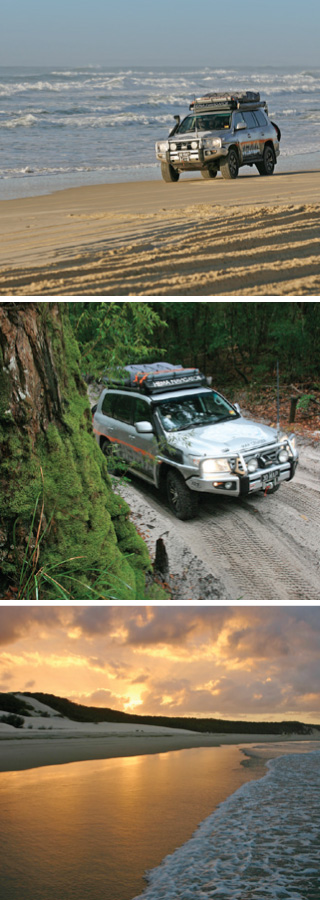Minimising Vehicle Impact on Fraser

Fraser Island is a whole new world of natural beauty: sand-rooted rainforest, cleansing lakes of trapped rainwater and ever-changing sand blows are contained within a 110km stretch of wild coastline from top to bottom. Along with its adventurous 4WD tracks and wildlife, these natural wonders present visitors with an outdoor experience like no other.
However, what makes these attractions so unique also makes them a commodity, meaning they require maintenance and protection. Visitors to the island can play their part in protecting what makes Fraser Island great, simply by observing some guidelines on minimising vehicle impact:
Fraser Island Navigation & Maps
- As a general rule, keep your vehicle in 4WD while on the island. This provides more control over your vehicle in soft sand, as well as decreasing your chances of damaging the tracks you drive on
- Lower your tyre pressures before arrival. Whether it’s before you reach the island or on the bitumen immediately after rolling off the barge, check your tyre pressures and alter them appropriately. Pressures of around 20-25 psi are necessary to sufficiently increase your vehicle’s footprint, though this number will fluctuate depending on your vehicle load. This will give you extra traction by spreading your load over a larger surface area, so you will have less impact on the tracks as well as minimising your chances of getting stuck.
- On the eastern beach, stay on the hard surface between the low and high tide marks. Around high tide, wait an hour or so instead of churning through soft sand and potentially damaging vegetation.
RELATED ARTICLES:
> Preparing yourself for Fraser Island
> A lesson in safe beach driving
- Stay on the tracks. Don’t go bush bashing; the tracks already on the island are more than enough to reach the special spots on Fraser.
- Be mindful of birds on the eastern beach. Drive around them and keep your distance, as many have been killed by thoughtless drivers.
- When encountering oncoming vehicles on the island tracks, only use existing passing bays and don’t drive into the roadside vegetation – reverse to a previous passing bay if necessary.
- Take care when manoeuvring at camping sites, especially if the view is obscured by luggage in the vehicle and you’re not entirely familiar with its dimensions.
- Keep noise to a minimum. Ensure your exhaust system is in good working condition and don’t rev the engine unnecessarily.
Keeping to these principles will allow you to discover Fraser Island to the fullest extent while also using practices that will minimise the impact of you and your vehicle’s visit. If everyone does their part to maintain the natural beauty and accessibility of Fraser, each new explorer that comes to the island will be able to experience it the same way we do today.








0 comments